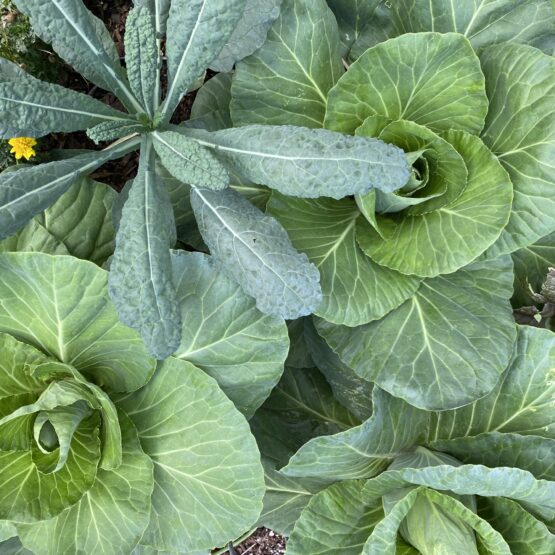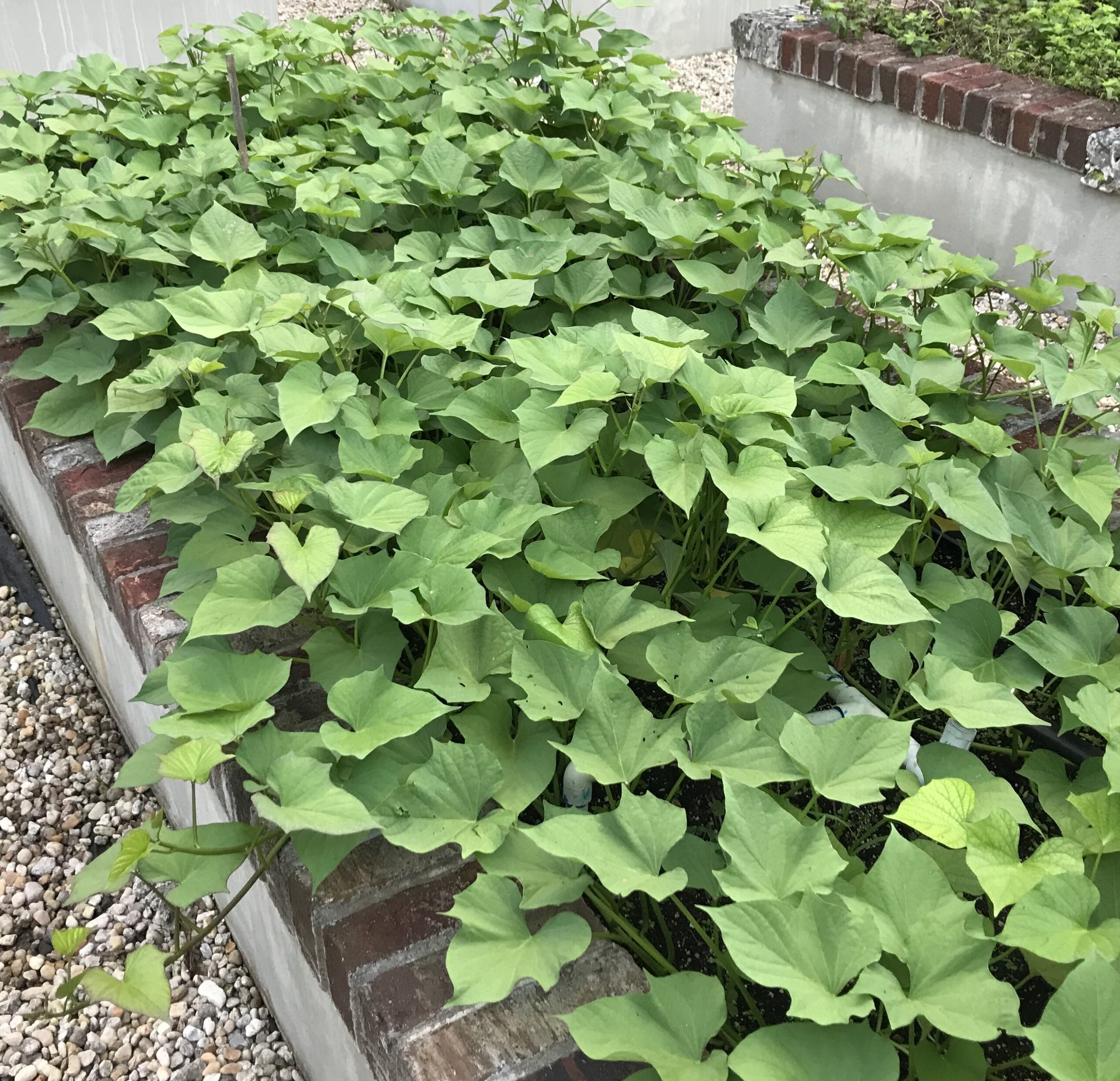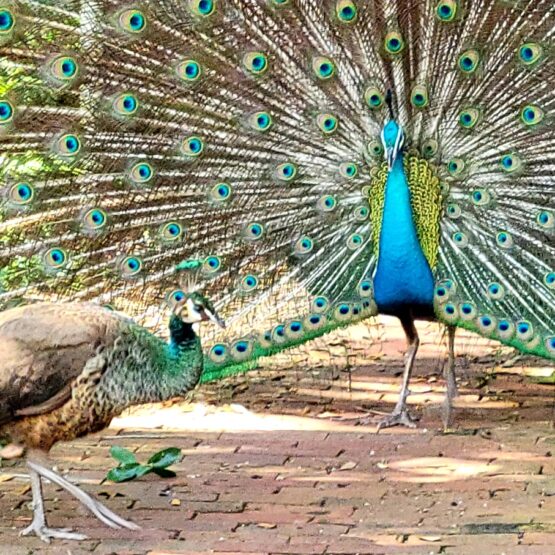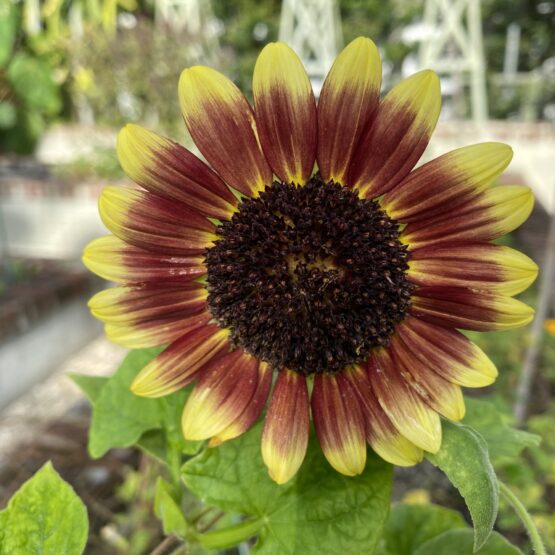Every year we post about the excitement of fall planting time, and this year is no exception. With the temperature beginning to drop a bit now, we do tend to get over-enthusiastic, we can’t help it. Not just because we’ve had enough of the heat, but also because we can start putting some of our favored crops in the ground without killing them.
The last post: Fall Bed Prep was about preparing the beds during the summer. We are, of course, done with solarizing any beds that needed it. We have turned under our cover crops to incorporate them into the soil (sunn hemp this year; our brand new Japanese millet seeds were a bust!). We also temporarily laid down cardboard on beds that we weren’t doing anything else to, so we could stop weeding them every two weeks! One by one, we will do the final preparations in each bed to get them ready for planting – usually adding some of our soil mix and compost or fertilizer to the existing soil and slightly working it in.
We will section off some of our beds into one-foot-squares using cut up bamboo stakes and string. They are removed at the beginning of the summer each year (so we can prep the beds), and re-sectioned at fall planting time. If you are unfamiliar with the square foot gardening method, please see our post Square Foot Gardening – We’re in Love! Yes, we really are in love with it, for many reasons!
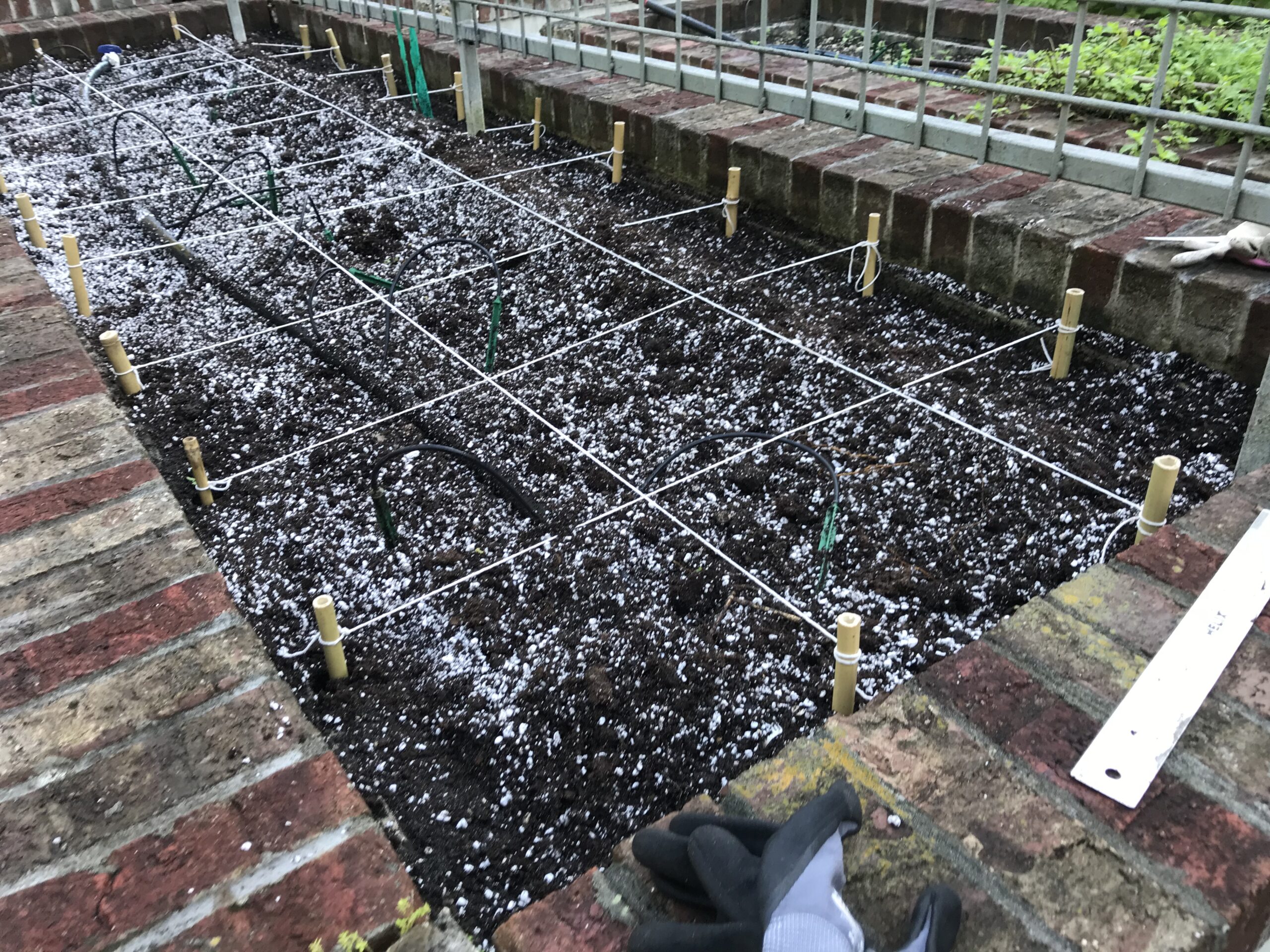
Ready for square foot gardening
We may also have to add a trellis depending on what crops are destined for the bed. The trellises are moved around each year as we do crop rotation, especially with tomatoes. Because some of our beds have been “refurbished” with a rock layer under the soil for drainage, securing a trellis in the bed can be a challenge. Our team here worked pvc pipes through the rock layer and placed the trellis legs into the pipes. Sturdy, steady and ready for planting!

Teamwork!
Our very first in-bed planting was a few Saturdays ago. Although this is a little earlier than we usually plant, we were up-potting a lot of tomato seedlings from 4 to 6-inch pots, and thought we would experiment with putting a few in the ground to see how they fared. So we chose a full-sun spot, put some 8-2-4 fertilizer and compost in and erected a trellis. We also added perlite as the soil was a bit dense; this will improve its drainage which is very important for the plant roots. Bear in mind, also, that we do not put tomatoes anywhere they were planted last season; almost every bed that we pulled our tomatoes from had root knot (harmful) nematodes and that is why we are solarizing and giving them a rest from this type of crop for at least a year.
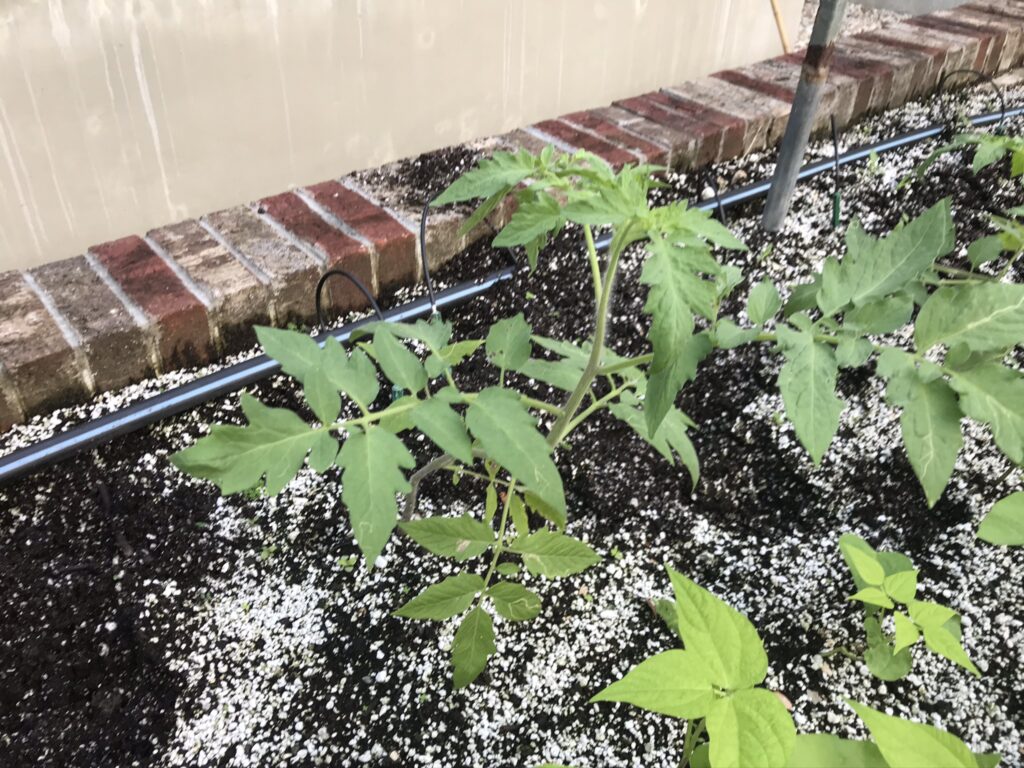
Yellow beefsteak – so happy to be in the ground!
Now, the main reason we haven’t planted much in late September/early October besides the heat is that typically we get a lot of rain this time of year. And boy are we! The tomatoes have held up well in it, but I’m glad we did not try a lot of crops yet. Even our starter seedlings that are partially covered with shade cloth are struggling to dry out. We know it’s a gamble to start them early but we think it’s worth a try! (See below for the results of that).
In addition to the tomatoes, we have also directly put seeds in the beds for:
-green bush beans
-cucumbers (we plant once early fall and once early Spring)
-radishes (in front of cucumbers as they are said to deter the cucumber beetle)
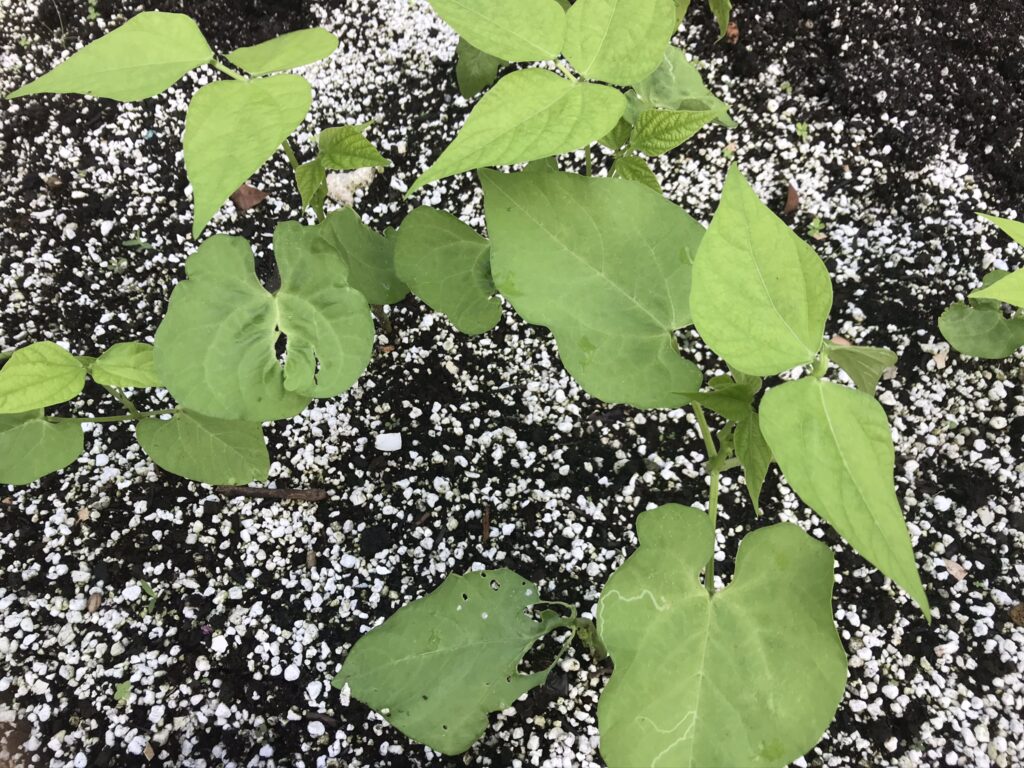
Young green bean plants – always direct seeded
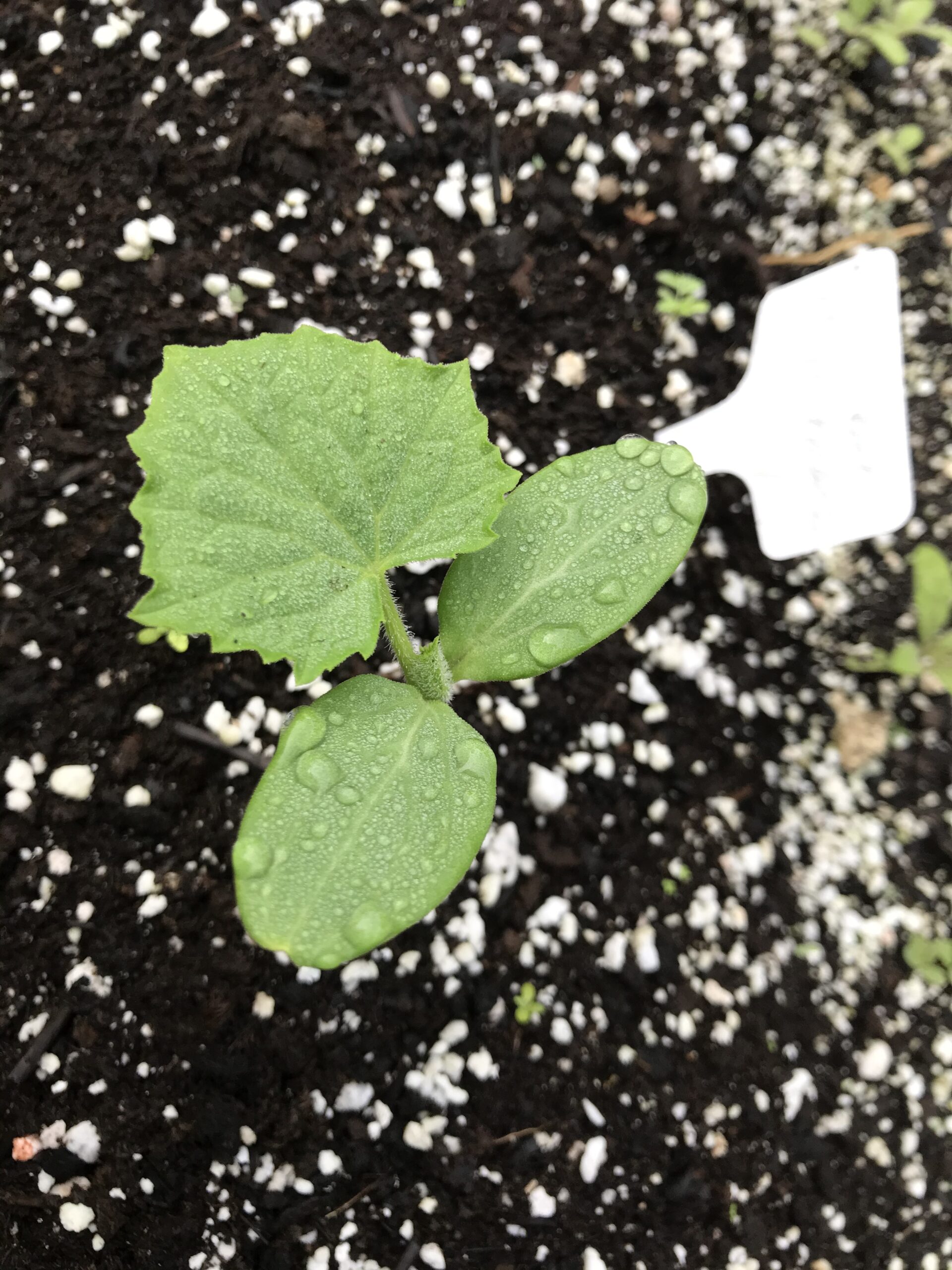
“Early Fortune” cucumber from Seed Saver’s Exchange – excellent germination rate!
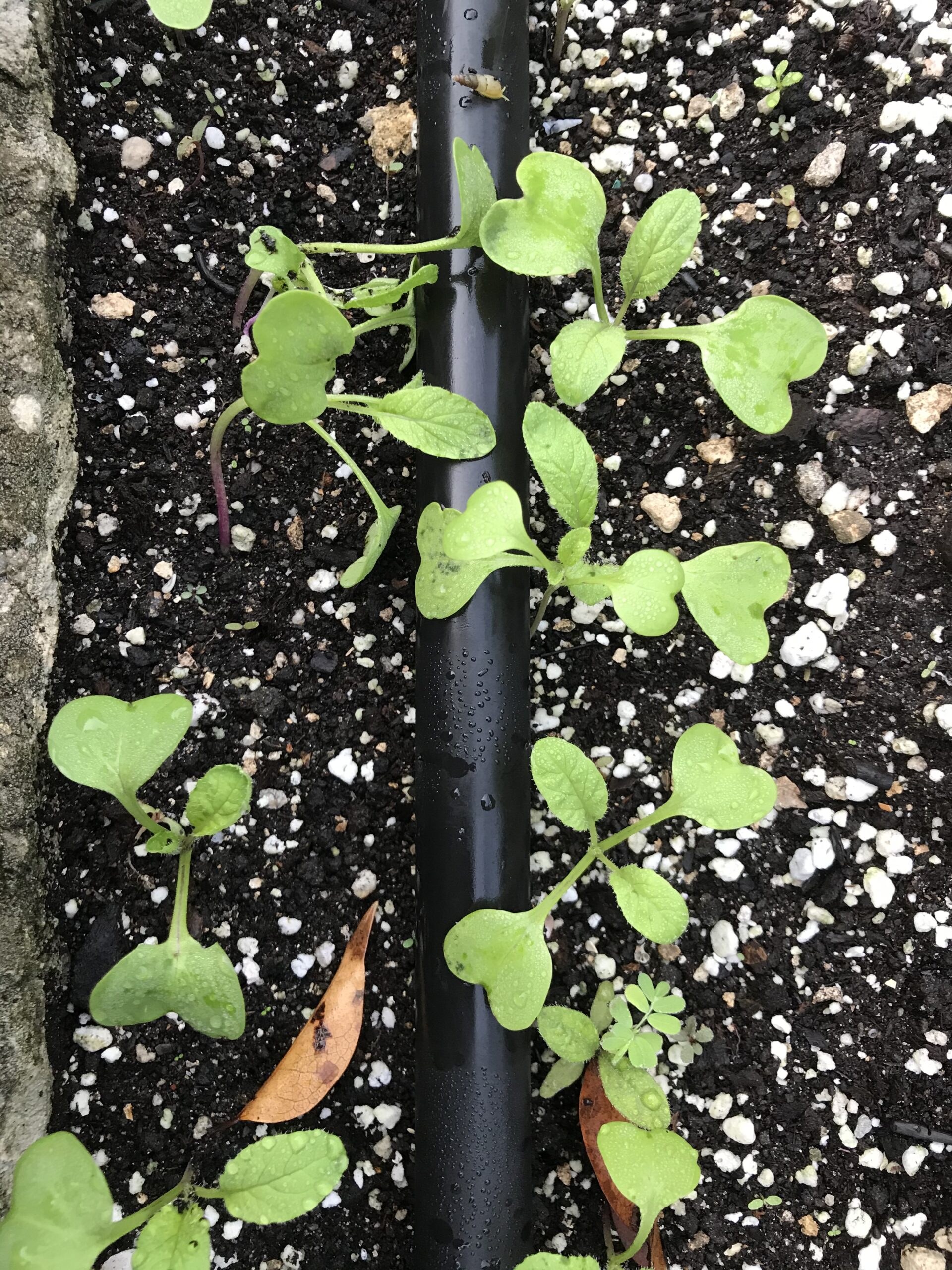
Radish sprouts
As we get more beds ready, and weather permits, we will soon be planting directly in the beds:
Seedlings:
-more tomatoes, which are doing beautifully right now in pots (all started from seed in August)
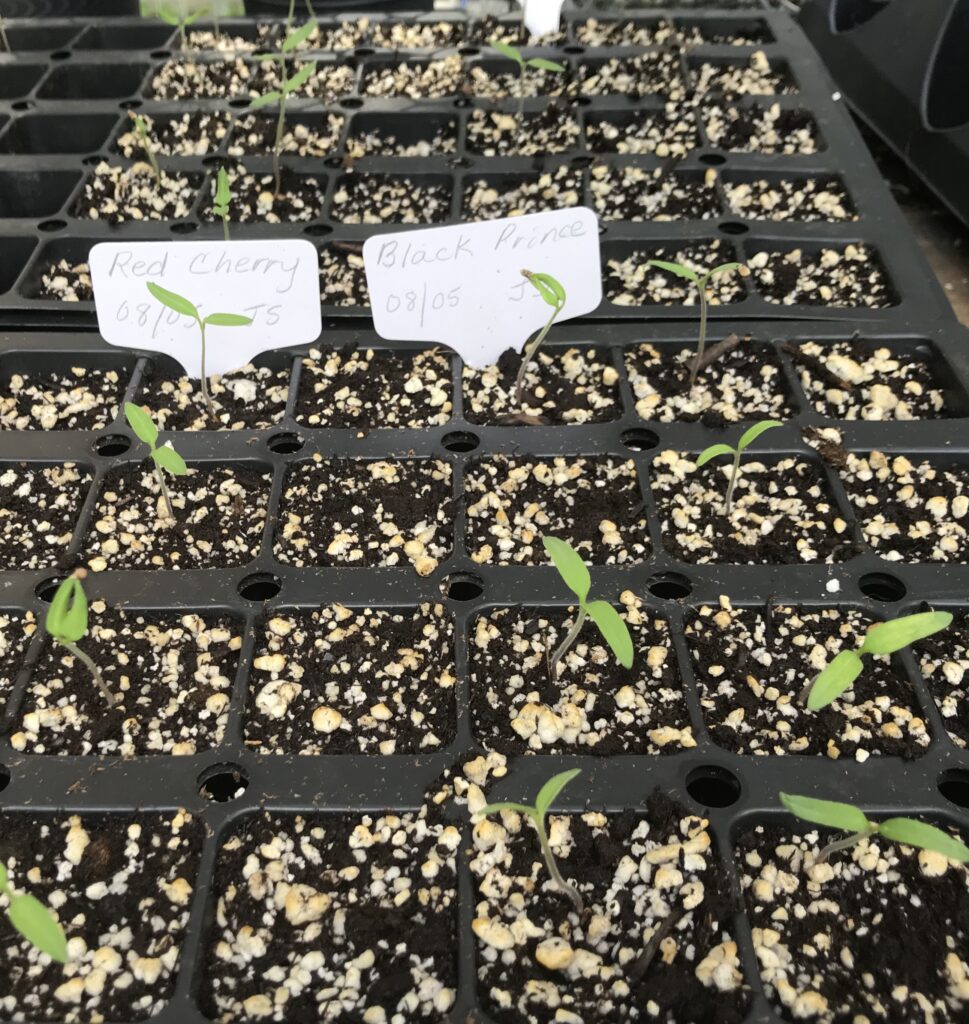
Tomato seeds planted on August 5th
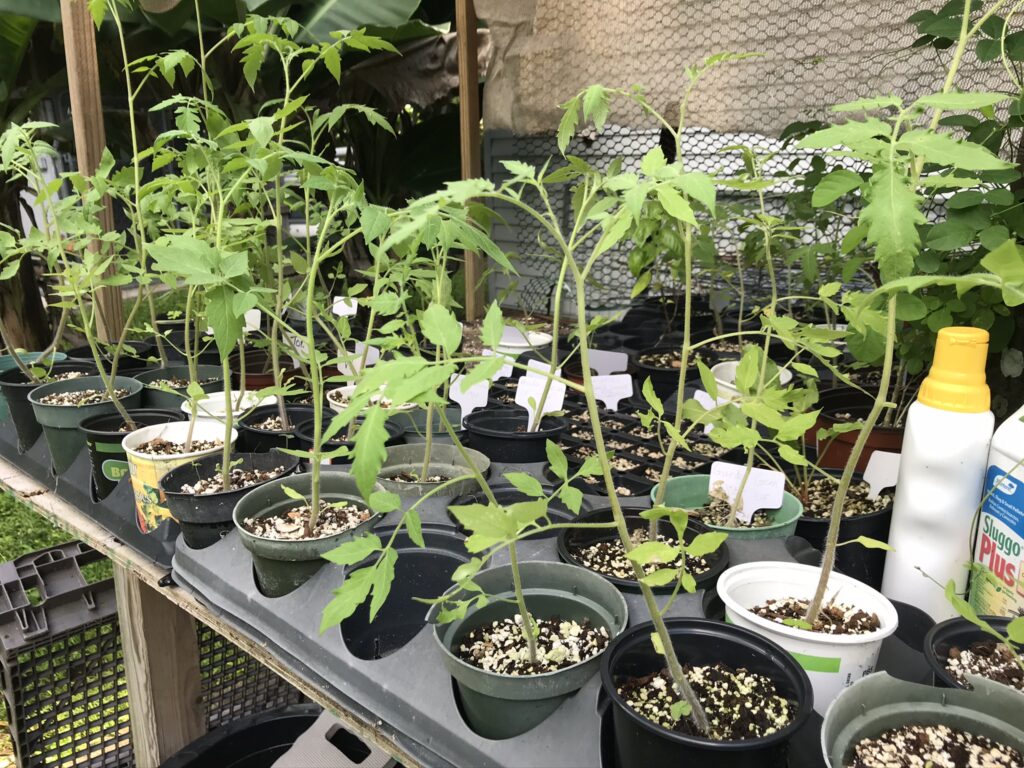
Several weeks later: “tomato plants in waiting”
-Peppers – We typically start a few varieties as early as we start our tomatoes. They take a while to germinate, so don’t give up!
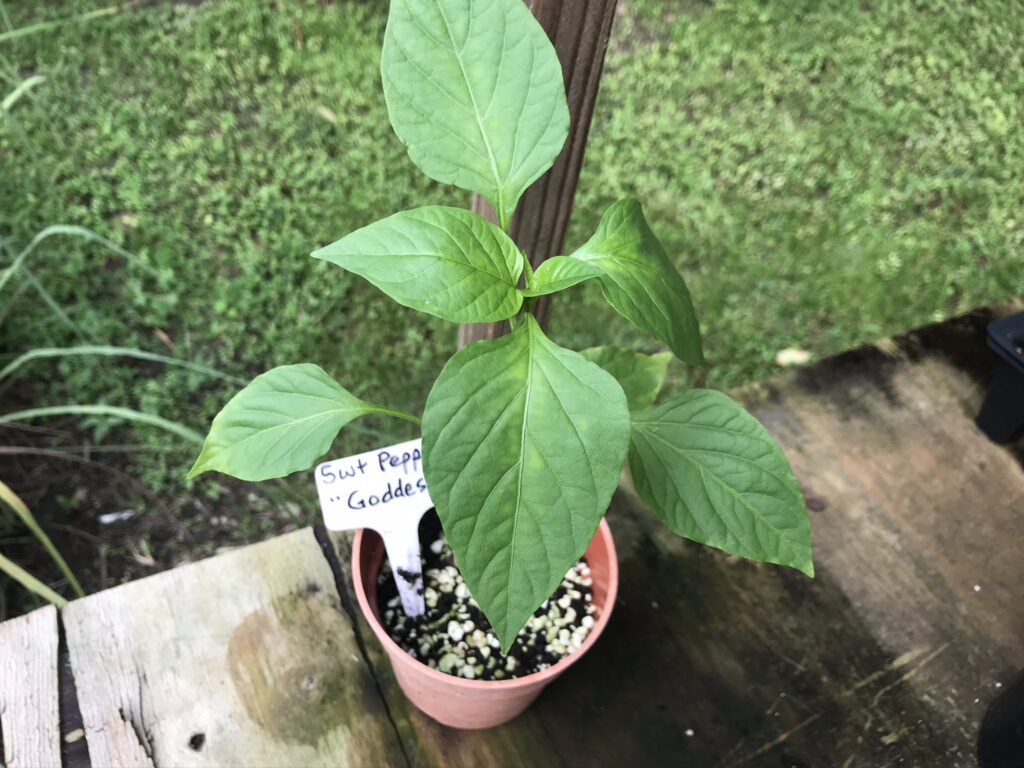
Sweet pepper plant – from seed
Some herbs:
-basil (some from seed in the Spring and kept alive!, some store-bought as starter plants)
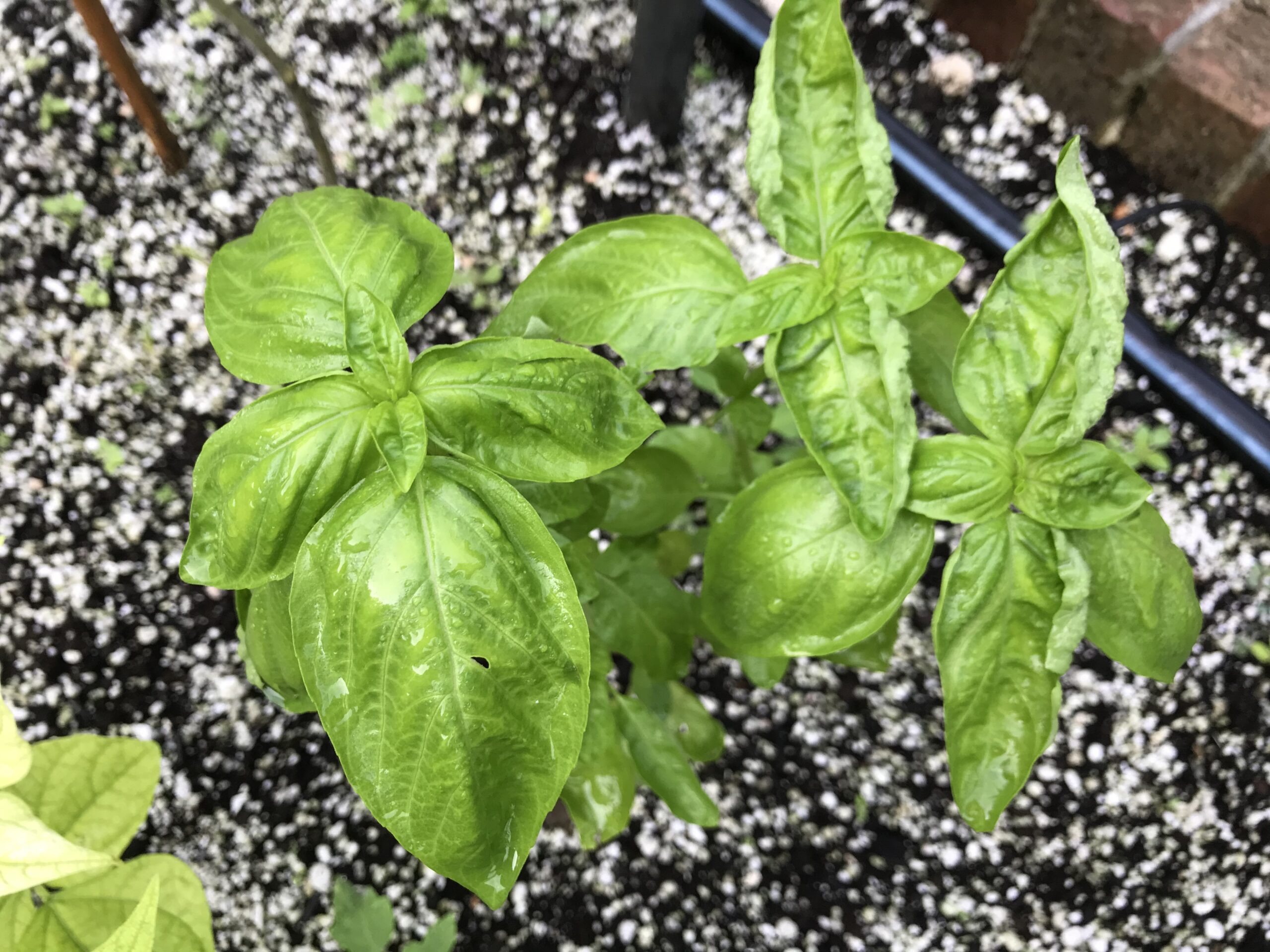
Basil, i.e. wannabe pesto!
-rosemary (started from cuttings in the Spring)

Rosemary plants raring to go!
-sage (store-bought starters)
Flowers:
Most of our flowers are started from seed, which we will begin doing soon (except for those that need cooler weather to germinate). We have some gomphrena (globe amaranth) plants that we dug up from a bed where they were “volunteers” and put into 4 inch pots. Now we can plant them in various beds and each seedling can produce a large bush of flowers, attracting pollinators to the garden.
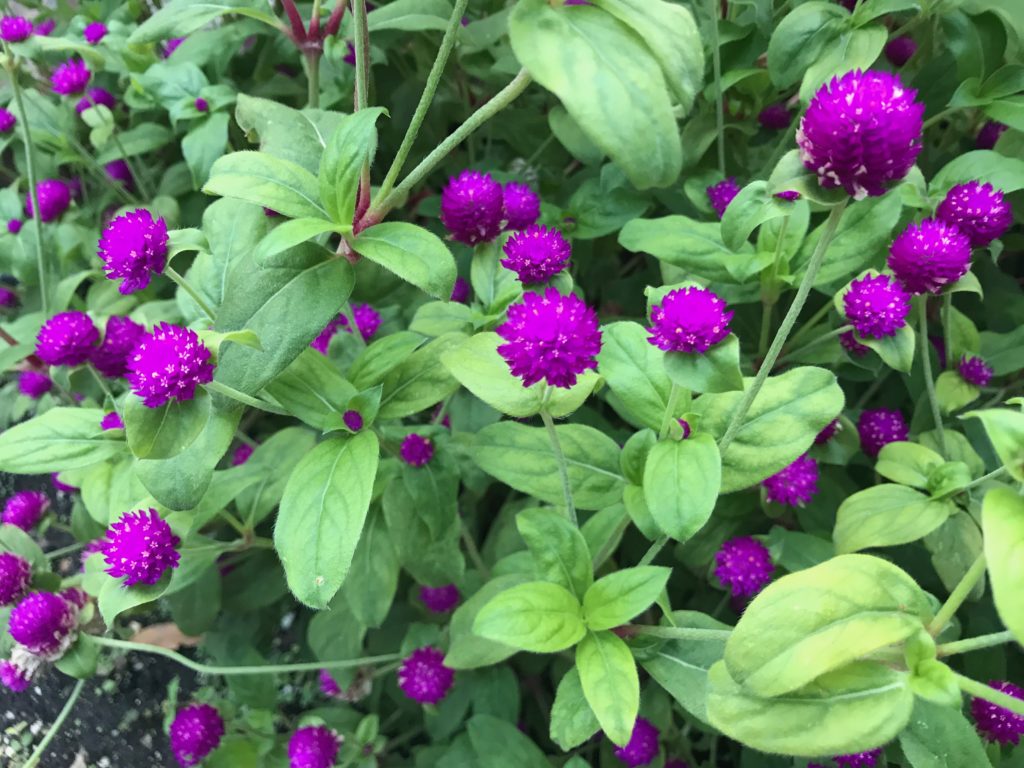
What the gomphrena seedlings will grow into (Last season’s display)
From seed to bed:
-arugula and mizuna
-bok choy
-mustard greens
-Chinese cabbage
From seed to starter trays (“flats”):
Meanwhile, as mentioned above, we have also started planting seeds in flats. Obviously we did our tomatoes several weeks ago, and some pepper plants followed. They are very heat tolerant and have done well. We also tried salvia (flower) seeds which did come up but they all just wilted from the heat, sad to say.
We’ve recently started some brassica (cabbage family) seeds in flats as well – See UPDATE below 🙁
-cabbages
-kales (lacinato and curly)
-collard greens
-kohlrabi
-mild green mustards
-karate cabbage (a newly beloved leafy green)
-and cauliflower
Almost all of them have sprouted already and have been moved from the shade to a more lighted location (partial sun under a shade cloth). Those that survive the rain or are not too “leggy” will soon be transplanted to 4 inch pots or straight into a bed.
UPDATE: We’ve unfortunately had a failed experiment here with starting the brassicas so early. With all our torrential rain and extreme heat, the seedlings wilted or withered away (only the karate survived). We will try the brassicas again next week when the daytime temps come down to about 85F on average. That’s really the correct time to start them; we thought we could get a head start but it didn’t work. We really don’t mind these “failures” because when we do luck out and get an earlier start, we’re pleased.
It IS frustrating when our fall planting time is delayed, both with what we feel comfortable putting in the ground and in starter trays that will survive this amount of rain. Honestly, we’ve never seen the early fall rainy season go for so long, and look forward to a break from it soon!
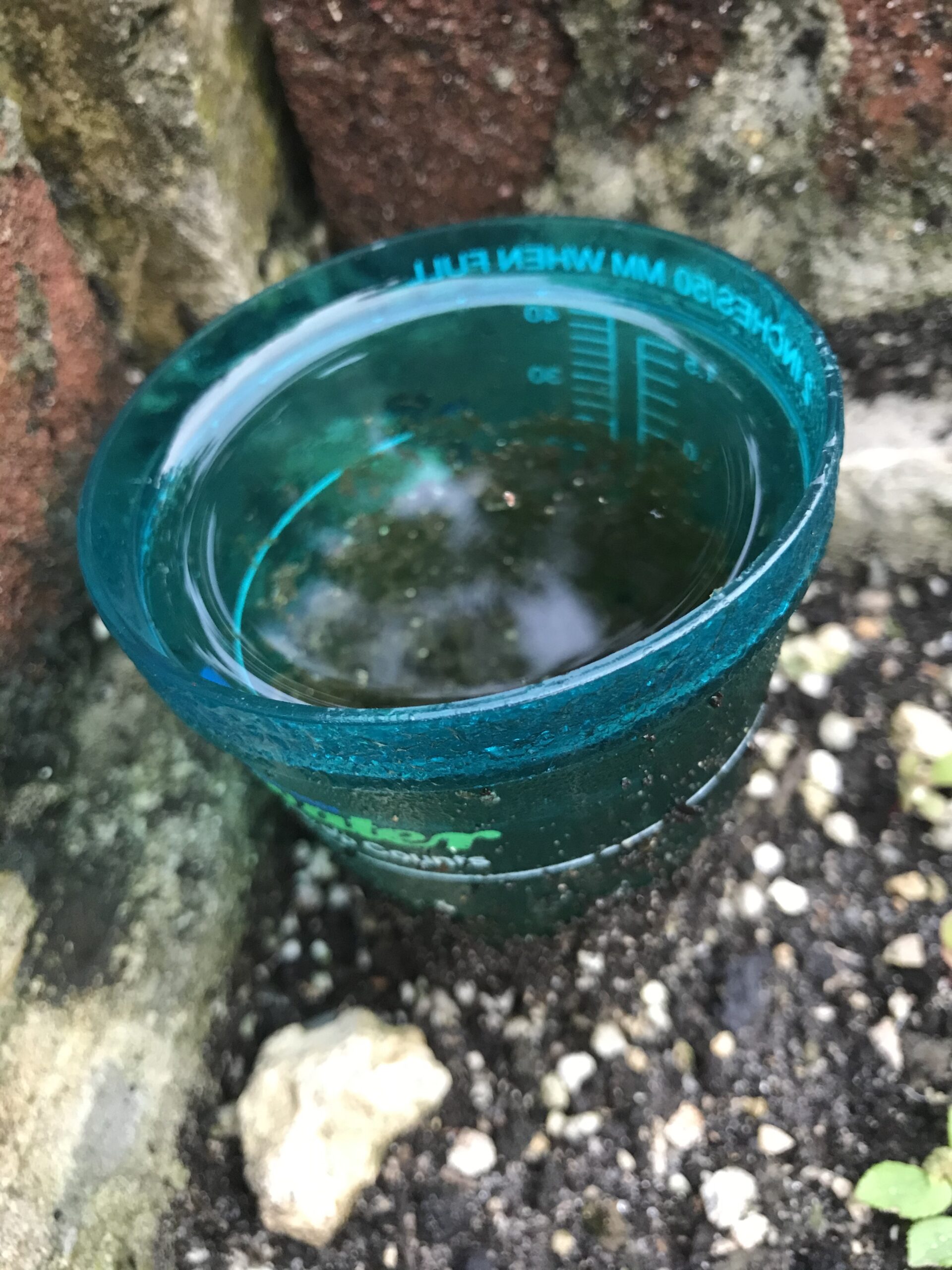
Rain rain go away!
If you want a really good idea of the scope of what we plant each fall, including what and when we plant through November, please see these three posts from previous years: Yesss!! Fall Planting – Getting Started!, Fall Planting: The Beds are Filling Up! and Fall Gardening – Action!
There is also an excellent video recently produced by the Little River Cooperative Nursery (which recently moved to the Redlands). Tiffany explains with clear demonstration how to plant and care for seeds in starter trays (aka “flats”). You can watch it here.
Happy Gardening, Everyone – fall planting time is such a thrilling time of year!
You Might Also Like...
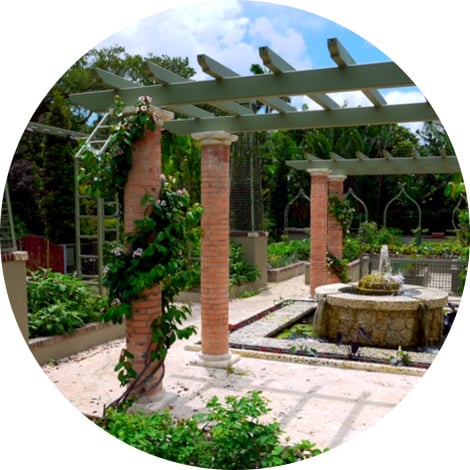
We are a small group of South Floridians who share a love of organic gardening, cooking and leading a healthy lifestyle. We garden together in Miami on a weekly basis year round, and enjoy the labor, harvest and feeling of community that this provides us. We are learning together what it means to grow food in South Florida, with our unique climate and seasons, which are so different than the rest of the country. This website is a venture in sharing information and resources relevant to gardening (and enjoying the harvest) in our South Florida environment. We hope you will find it useful!
